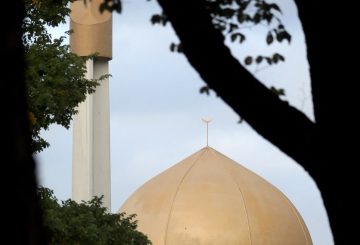Ngôi sao băng, còn được gọi là thiên thạch, có thể được nhìn thấy vào bất kỳ đêm nào trong năm. Tuy nhiên, một số đêm tốt hơn những đêm khác để xem các sự kiện thiên thể này. Khi Trái đất quay quanh Mặt trời, nó đi qua các dòng bụi và mảnh vụn từ sao chổi và tiểu hành tinh. Các mảnh vụn này gây ra “mưa sao băng”, khi số lượng sao băng có thể nhìn thấy trên bầu trời tăng lên đáng kể.
Ngay bây giờ, chúng ta đang di chuyển qua vùng ngoại ô của một dòng mảnh vỡ do sao chổi Halley để lại. Điều này tạo ra mưa sao băng Eta Aquariid, đặc biệt có thể nhìn thấy từ Nam bán cầu. Hàng năm, khi Trái đất đạt đến điểm này trên quỹ đạo của nó, Eta Aquariids có thể được nhìn thấy trên bầu trời buổi sáng.
Màn hình năm nay dự kiến sẽ đặc biệt. Đỉnh điểm của trận mưa rào trùng với Mặt trăng mới, có nghĩa là bầu trời sẽ tối hơn trong những giờ trước bình minh – hoàn hảo để xem các mảnh vỡ của sao chổi nổi tiếng rơi xuống. Cũng có những gợi ý rằng vòi hoa sen có thể “hoạt động” hơn bình thường.
Sao chổi Halley, có tên chính thức là 1P/Halley, quay quanh Mặt trời 76 năm một lần và đã đi trên con đường hiện tại của nó hàng nghìn năm. Mỗi khi nó đi qua Hệ Mặt trời bên trong, sao chổi sẽ đổ bụi và khí. Bụi này lan rộng trong không gian, tạo ra một trường mảnh vụn rộng dọc theo quỹ đạo của sao chổi.
Trái đất đi qua mảnh vỡ này hai lần một năm, dẫn đến hai trận mưa sao băng nổi tiếng. Vào tháng 10, chúng ta thấy mưa sao băng Orionid, có thể nhìn thấy từ cả hai bán cầu. Nhưng trận mưa tốt hơn trong hai trận mưa, mưa sao băng Eta Aquariid, đạt đỉnh vào đầu tháng Năm.
Eta Aquariids là một trong những trận mưa sao băng tốt nhất trong năm, nhưng chúng không nổi tiếng vì chúng được nhìn thấy rõ nhất từ bán cầu nam và rất khó quan sát từ các vị trí phía bắc xích đạo.
Đối với những người ở Nam bán cầu, thời điểm tốt nhất để quan sát Eta Aquariids là vào những giờ trước bình minh, khi bức xạ – điểm trên bầu trời nơi các thiên thạch xuất hiện – cao trên bầu trời. Số lượng thiên thạch nhìn thấy tăng lên khi bức xạ tăng cao hơn trên bầu trời.
Mưa sao băng Eta Aquariid năm nay dự kiến sẽ đặc biệt đặc biệt. Không chỉ bầu trời tối do Mặt trăng mới, khiến các thiên thạch dễ phát hiện hơn, mà các nhà khoa học cũng tin rằng năm nay có thể nhìn thấy nhiều thiên thạch hơn đáng kể so với bình thường. Trên thực tế, một số người cho rằng mưa sao băng Eta Aquariid 2024 có thể là mưa sao băng mạnh nhất trong toàn bộ thế kỷ 21.
Dự đoán hoạt động của mưa sao băng rất khó khăn và một số nhà nghiên cứu tin rằng năm nay có thể chỉ là “kinh doanh như bình thường”. Dù vậy, với điều kiện hoàn hảo và đỉnh cao rơi vào sáng ngày 6 tháng 5, đây là một cơ hội tuyệt vời để lên kế hoạch cho chuyến đi cuối tuần đến vùng nông thôn để thưởng thức màn trình diễn pháo hoa tự nhiên trước khi ngắm bình minh mùa thu tuyệt đẹp.




























































